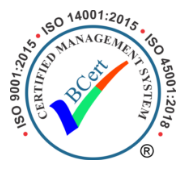South Coast Highway Retexturing
Client: Main Roads Western Australia
Location: Great Southern Region, WA
Scope of Works: Retexturing
Equipment used: Stripe Hog 3000
Following a number of road accidents on the South Coast Highway, Main Roads engaged RETEX Pavement Services to address the challenging section of the regional road network near Denmark, Great Southern region, WA.
Portions of the highway had been dubbed “crash hotspots” due to excess bitumen buildup on the road surface, otherwise known as “flushing” of the surface. This leads to a reduced surface texture on the road and corresponding friction loss for vehicles. While this ultimately leads to a more slippery road surface in all weather conditions, it is particularly dangerous in wet conditions.
RETEX Pavement Services consulted with Main Roads Western Australia and, after a thorough site review, we implemented our strict project management methodology to ensure the project was delivered on time, within scope and in line with our client’s expectations.
Using the Stripe Hog 3000, we treated and removed excess bitumen binder from the road surface, using carefully prescribed ultra-high-pressure water blasting. The Stripe Hog 3000 is Australia's most versatile, cost-efficient, and environmentally friendly high-pressure water blaster, for small to medium size projects. Providing unmatched manoeuvrability and versatility, this machine was the perfect one for the job. In a fully encapsulated process, the excess binder is vacuum recovered into a waste tank, leaving an exposed aggregate surface with renewed texture depth.
The UHP water blasting process is carefully prescribed to achieve 1.5 to 2.5mm typically of macro texture. When we started the job, the mean profile depth (MPD) was sitting at 0.39mm, with the after-treatment MPD sitting at an impressive 2.19mm.
Why is retexturing so important?
Retexturing provides immediate hazard reduction of the area that is treated, allowing for a safer environment for motorists. With early intervention, retexturing is ultimately the more cost-effective option when compared to having to lay entirely new sections of road, particularly on the regional road network. The treatment of flushed seals on sound pavements can also significantly extend the service life of the road, in some cases by 3 to 5 years. These options are far less costly and also create much less disruption to traffic.
The upfront and whole-life cost and efficiency benefits of retexturing are obvious but there are also significant sustainability elements to consider. Extending the service life of existing asphalt and concrete pavements is a significant step in reducing carbon emissions. There are also the benefits of reduced fossil fuels for bitumen production and laying as well as aggregate quarrying.
Overall, the job was a great success and the team at RETEX is proud to have had a hand in ensuring that the regional road network is that much safer for all of the commuters that use these highways every day.
Location: Great Southern Region, WA
Scope of Works: Retexturing
Equipment used: Stripe Hog 3000
Following a number of road accidents on the South Coast Highway, Main Roads engaged RETEX Pavement Services to address the challenging section of the regional road network near Denmark, Great Southern region, WA.
Portions of the highway had been dubbed “crash hotspots” due to excess bitumen buildup on the road surface, otherwise known as “flushing” of the surface. This leads to a reduced surface texture on the road and corresponding friction loss for vehicles. While this ultimately leads to a more slippery road surface in all weather conditions, it is particularly dangerous in wet conditions.
RETEX Pavement Services consulted with Main Roads Western Australia and, after a thorough site review, we implemented our strict project management methodology to ensure the project was delivered on time, within scope and in line with our client’s expectations.
Using the Stripe Hog 3000, we treated and removed excess bitumen binder from the road surface, using carefully prescribed ultra-high-pressure water blasting. The Stripe Hog 3000 is Australia's most versatile, cost-efficient, and environmentally friendly high-pressure water blaster, for small to medium size projects. Providing unmatched manoeuvrability and versatility, this machine was the perfect one for the job. In a fully encapsulated process, the excess binder is vacuum recovered into a waste tank, leaving an exposed aggregate surface with renewed texture depth.
The UHP water blasting process is carefully prescribed to achieve 1.5 to 2.5mm typically of macro texture. When we started the job, the mean profile depth (MPD) was sitting at 0.39mm, with the after-treatment MPD sitting at an impressive 2.19mm.
Why is retexturing so important?
Retexturing provides immediate hazard reduction of the area that is treated, allowing for a safer environment for motorists. With early intervention, retexturing is ultimately the more cost-effective option when compared to having to lay entirely new sections of road, particularly on the regional road network. The treatment of flushed seals on sound pavements can also significantly extend the service life of the road, in some cases by 3 to 5 years. These options are far less costly and also create much less disruption to traffic.
The upfront and whole-life cost and efficiency benefits of retexturing are obvious but there are also significant sustainability elements to consider. Extending the service life of existing asphalt and concrete pavements is a significant step in reducing carbon emissions. There are also the benefits of reduced fossil fuels for bitumen production and laying as well as aggregate quarrying.
Overall, the job was a great success and the team at RETEX is proud to have had a hand in ensuring that the regional road network is that much safer for all of the commuters that use these highways every day.


